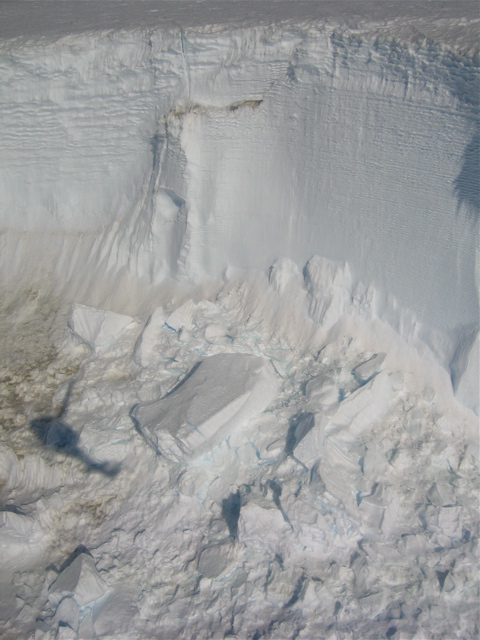( Log In ) Log In is for TREC Teachers & Researchers only
  |
| Dena_Rosenberger |
 Jan 20 2006, 10:50 PM Jan 20 2006, 10:50 PM
Post
#1
|
 TREC Teacher    Group: TREC Team Posts: 96 Joined: 1-November 05 Member No.: 22 |
Bone Dry
January 14-16, 2006 For those interested in things Antarctic and some fine journalism, check out the weekly Antarctic newspaper at http://AntarcticSun.usap.gov Hello from the Ice! For additional Antarctic pics, check out the Gallery. Where’s Rosenberger? The Dry Valleys, on the continent of Antarctica What a magnificent place! Two million years without actual rain hasn’t dampened the beauty here. You would think that nothing could live here, but there is actually an incredibly diverse microbe population with adaptations to the unbelievably harsh conditions. Only about 2% of Antarctica is not covered with ice and the Dry Valleys region is the largest area on the continent that falls in that category. Located among the mountains across McMurdo Sound on the part of the continent closest to New Zealand, the valleys receive the equivalent of only 6 mm of water, on average, each year in the form of snow. Completely devoid of terrestrial vegetation, the Dry Valleys region is considered one of the most extreme deserts on the planet. Crossing over McMurdo Sound in the helicopter, our pilot paused by this huge floating iceberg:  All icebergs are continually falling apart! Note the helo shadow near the HUGE ice chunk:  We flew out to the Talyor Dry Valley by helicopter (a 45 minute flight), loaded with our extreme camping gear to the semi-permanent camp at Lake Fryxell called F6 Camp, to join the “Stream Team” there. There is another camp on the other side of this large freshwater lake. This is the Commonwealth Glacier coming down from the Asgard Mountain Range on the north side of the Taylor Valley:  Lake Fryxell! The Canada Glacier plunges out of the Asgard Range behind the lake. Note the camp on the shore of the lake with the rows of tents around the building:  The helo landing pad with the Kukri Hills behind it on the south side of Taylor Valley (Thanks for a safe and interesting ride to our pilot Barry!). These are the glaciers that create the stream we will be studying:  I set up my mountain tent (nice view!):  We will be helping them set up and run an experiment to study how nutrients are dispersed through a stream system by adding salt, NaCl, and another harmless compound, NaBr, to the Von Guerrard stream, a glacial stream that ebbs and flows with the day as the surrounding glaciers melt with the position of the sun. Along with the five Stream Team scientists, led by Karen Cozzetto, a Ph.D. student from the University of Colorado, we will filter and collect water at several stations along the stream. Our first two days were hectic with setting up and preparing for the experiment. We worked until 1:30 in the morning setting up for the stream experiment that would start at 4:15 am. Yikes! Looking back at camp from the stream trail with the Commonwealth Glacier dominating the scene:  |
  |
1 User(s) are reading this topic (1 Guests and 0 Anonymous Users)
0 Members:

|
NSF Acknowledgment & Disclaimer | Time is now: 2nd November 2024 - 02:27 AM |
Invision Power Board
v2.1.7 © 2024 IPS, Inc.








